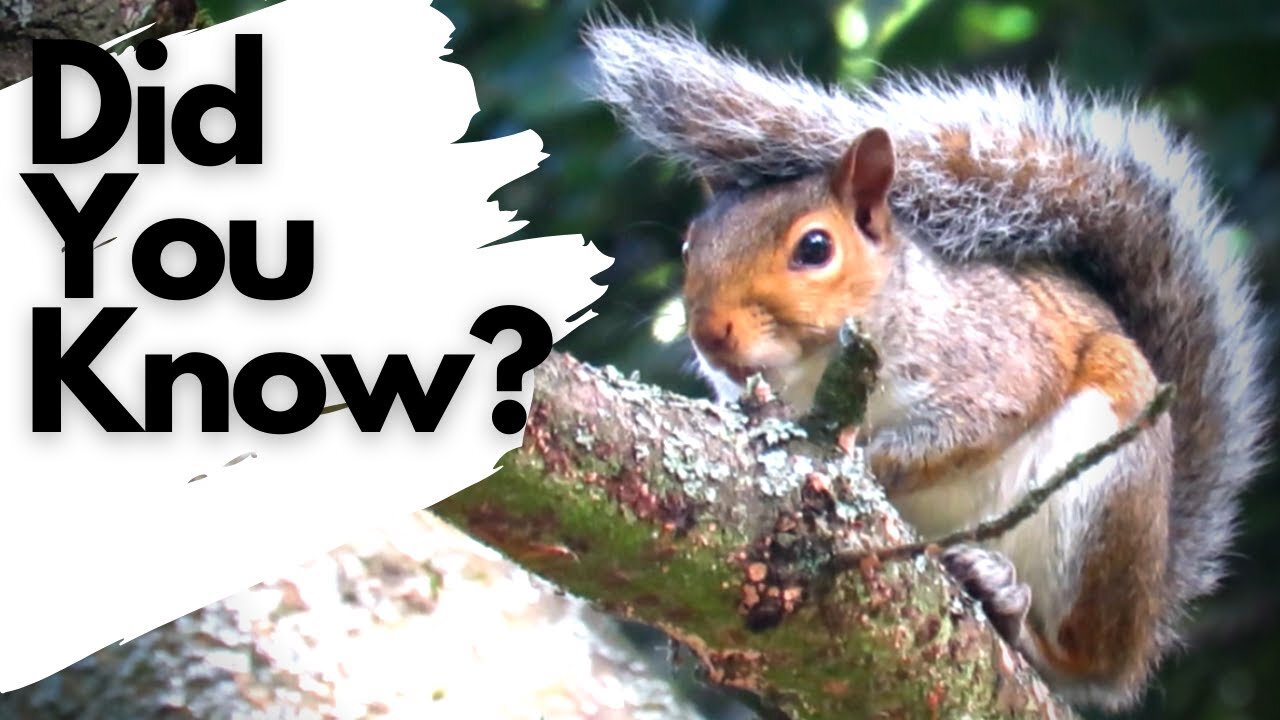Premium Only Content

Facts you need to know about GREY SQUIRRELS!
Grey squirrels, scientifically known as Sciurus carolinensis, are arboreal rodents native to the eastern and central United States. Here are some key facts about them:
Appearance: Grey squirrels typically have a grey fur coat with white underparts, although they can sometimes appear brownish. They have large, bushy tails that help them balance while navigating trees.
Habitat: These squirrels are highly adaptable and can be found in a variety of habitats, including forests, parks, and urban areas. They are particularly well-suited to living in deciduous forests.
Diet: Grey squirrels are omnivores with a diet consisting mainly of nuts, seeds, berries, and fruits. They will also consume insects, bird eggs, and small vertebrates when available.
Behavior: Grey squirrels are known for their agility and are excellent climbers. They build nests, called dreys, in trees using leaves, twigs, and other materials. They are active during the day, often foraging for food on the ground and in trees.
Reproduction: Breeding typically occurs twice a year, in late winter/early spring and again in late spring/early summer. Females give birth to litters of 2-6 offspring, called kittens, after a gestation period of around 44 days.
Ecological Impact: In regions where they have been introduced, such as the United Kingdom, grey squirrels have had a significant impact on native red squirrel populations through competition for resources and the transmission of diseases.
Control Efforts: Due to concerns about their impact on ecosystems, efforts have been made to control grey squirrel populations in certain areas. These efforts include trapping, hunting, and the introduction of contraception methods.
Adaptability: Grey squirrels are highly adaptable to human environments and can often be found in urban and suburban areas, where they may become accustomed to human presence and even feed from bird feeders.
Communication: Like many rodents, grey squirrels use vocalizations and body language to communicate with one another. They may make various sounds, including chirps, barks, and chatters, to convey different messages.
Protection: While grey squirrels are not considered endangered, conservation efforts may focus on protecting native species from their impacts and ensuring their management in areas where they have been introduced.
#SquirrelFacts #Wildlife #Ecology #InvasiveSpecies #Conservation #AnimalBehavior #Nature #UrbanWildlife #Rodents #Adaptation
-
 2:42:30
2:42:30
TimcastIRL
9 hours agoKash Patel CONFIRMED, Deep State PANICS, Mitch McConnell To RETIRE w/ Kevin Smith | Timcast IRL
166K301 -
 1:04:47
1:04:47
Candace Show Podcast
13 hours agoBecoming Brigitte: The Epilogue
114K145 -
 3:43:51
3:43:51
Alex Zedra
8 hours agoLIVE! Come Play WoT with me!
44.3K11 -
 5:22:49
5:22:49
Drew Hernandez
16 hours agoDOGE EXPOSES $2 BILLION SCHEME LINKED TO STACEY ABRAMS?!
70.1K46 -
 1:27:59
1:27:59
Kim Iversen
11 hours agoRFK Jr Declares No More Cheetos on Welfare? | Yale Confirms Long Covid Is Actually Vaccine Injury!
101K116 -
 1:08:43
1:08:43
The Charlie Kirk Show
8 hours agoTHOUGHTCRIME Ep. 74 — Charlie's Campus Return? Robo-Butlers? Garden of American Heroes?
87.1K18 -
 1:09:53
1:09:53
Slightly Offensive
9 hours ago $7.59 earnedIs the US Headed for MORE WAR Under TRUMP? | Guest: Scott Horton
51.3K13 -
 58:29
58:29
The StoneZONE with Roger Stone
8 hours agoRoger Stone Hails Confirmation of Kash Patel, Trashes Schiff for Attacks On Patel | The StoneZONE
57.7K21 -
 48:44
48:44
Man in America
14 hours agoA MASSIVE Global Financial Reset Is Coming—Are You Ready?
45.3K22 -
 1:15:42
1:15:42
Precision Rifle Network
1 day agoS4E5 Guns & Grub - The Best Rifle Under $2000
77.9K8